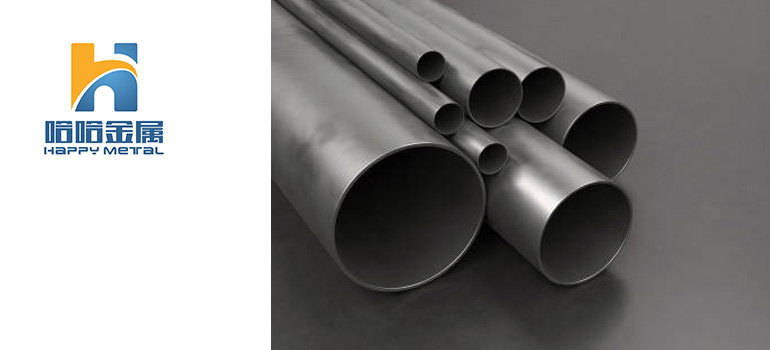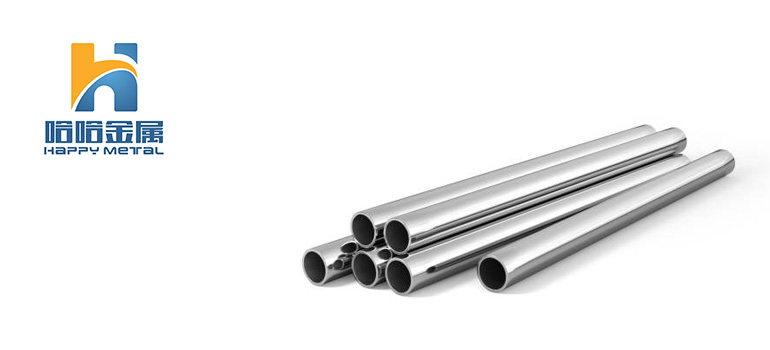Summary:
Analysis of carbon steel pipe grades: How to choose the most suitable pipe for you
Definition of carbon steel pipe grades
Classification of carbon steel pipe grades
ASTM standards and their definition of carbon steel pipe grades
API standards and their requirements for carbon steel pipe grades
DIN standard and its application in the evaluation of carbon steel pipe grades
How to choose the most suitable carbon steel pipe grade for your project
The grade of carbon steel pipes is crucial for any engineering project involving carbon steel pipes. Firstly, let’s have a deeper understanding of the definition of carbon steel pipe grades. In pipeline engineering, the grade of carbon steel pipes usually refers to the standardized grade of the chemical composition, mechanical properties, and processing technology of the pipes. The existence of these levels makes the selection of pipeline materials more scientific and reliable, helping to ensure the safety, stability, and sustainable operation of engineering projects.

Definition of carbon steel pipe grades
Carbon steel pipe grade refers to the standardized grade based on the chemical composition, mechanical properties, and processing technology of the pipe. These rating systems are based on specifications developed by international standard organizations such as ASTM, API, DIN, etc., aimed at classifying and standardizing carbon steel pipes for engineering design, selection, and use.
Specifically, the definition of carbon steel pipe grade typically includes the following aspects:
Chemical composition: The grade of carbon steel pipes is usually distinguished based on their chemical composition. Different grades of pipes may contain different proportions of elements such as carbon, silicon, manganese, phosphorus, sulfur, etc. The content of these elements can affect the mechanical properties and processing technology of the pipes.
Mechanical properties: The grade of the pipe also reflects its mechanical properties, including tensile strength, yield strength, elongation, hardness and other indicators. These performance indicators directly affect the performance and safety of pipes in various engineering environments.
Processing requirements: Different grades of carbon steel pipes may have different processing requirements, such as heat treatment, cold treatment, hot rolling, cold drawing, etc. The selection of these processing techniques will affect the microstructure and properties of the pipes.
Overall, the definition of carbon steel pipe grade is a standardized classification system that comprehensively considers the chemical composition, mechanical properties, and processing technology of pipes, aiming to provide reliable basis for pipe selection and use in engineering projects.
Classification of carbon steel pipe grades
The classification of carbon steel pipe grades is mainly based on the chemical composition, mechanical properties, and processing technology of the pipes. The following is a common classification of carbon steel pipe grades:
ASTM Standard Classification: ASTM international standards typically classify carbon steel pipes based on their chemical composition and mechanical properties. Common ones include ASTM A53, ASTM A106, ASTM A333, and so on. For example, ASTM A53 pipes are divided into two grades: A and B. A grade pipes are suitable for general purposes, while B grade pipes are suitable for environments with high requirements such as high pressure and high temperature.
API Standard Classification: The American Petroleum Institute (API) has developed a series of carbon steel pipe standards for use in the oil and gas industry, such as API 5L. These standards classify pipes according to their purpose and performance requirements, such as API 5L pipes divided into two levels: PSL1 and PSL2, with PSL2 having stricter requirements.
DIN Standard Classification: The German Organization for Standardization (DIN) has developed a series of standards for carbon steel pipes used in engineering and manufacturing fields, such as DIN 1629, DIN 17175, etc. These standards usually classify pipes according to their chemical composition and mechanical properties to meet different engineering needs.
Classification of pipe wall thickness: The grade of pipes may also be classified based on their wall thickness, such as standard 40 (STD), rated 40 (SCH40), rated 80 (SCH80), and so on. These classifications are commonly used in pipeline design and engineering construction to ensure safe operation of pipelines under various pressure and temperature conditions.
These are common classifications of carbon steel pipe grades, each with its own specific standards and scope of application, and suitable pipe grades can be selected based on specific engineering needs.
ASTM standards and their definition of carbon steel pipe grades
The definition of carbon steel pipe grade in ASTM (American Society for Testing and Materials) standards is usually based on specifications such as the chemical composition, mechanical properties, and processing technology of the pipe. The following are some common ASTM standards and their definitions for carbon steel pipe grades:
ASTM A53/A53M: This standard applies to welded and seamless carbon steel pipes for pressure and mechanical applications. According to this standard, pipes are divided into three grades: Grade A, Grade B, and Grade C. Among them, Grade A pipes are suitable for hot and cold dip coating, welding, and seamless processing, while Grade B and Grade C pipes have higher strength and pressure resistance.
ASTM A106/A106M: This is the standard for seamless carbon steel pipes used for high-temperature services. According to this standard, pipes are divided into three grades: Grade A, Grade B, and Grade C. Grade A pipes are suitable for low-temperature services, while Grade B and Grade C pipes are suitable for high-temperature services, with Grade C pipes having stricter requirements.
ASTM A333/A333M: This standard is applicable to seamless and welded carbon steel pipes for low-temperature services. According to this standard, pipes are divided into several grades, such as Grade 1, Grade 3, Grade 4, Grade 6, Grade 7, Grade 8, Grade 9, Grade 10, and Grade 11. These grades of pipes have different tensile strength and impact toughness, making them suitable for low-temperature services at different temperatures.
The above are some common ASTM standards and their definitions of carbon steel pipe grades. Each standard has its specific application scope and performance requirements, and engineers and designers can choose appropriate standards and grades of carbon steel pipes based on specific engineering needs.
API standards and their requirements for carbon steel pipe grades
The API (American Petroleum Institute) standard also establishes a series of requirements for the grade of carbon steel pipes. The following are some examples of API standards commonly used for carbon steel pipe grades:
API 5L: This is the standard for pipeline steel pipes used for transporting oil and natural gas. The API 5L standard covers many levels, such as API 5L Grade B, API 5L X42, API 5L X52, etc. Each level has its specific chemical composition, mechanical properties, and impact toughness requirements to adapt to different environments and application scenarios.
API 5CT: This is the standard for carbon steel pipes used for oil well casing and pipelines. The API 5CT standard covers several levels, such as API 5CT J55, API 5CT K55, API 5CT N80, etc. Each level has its specific chemical composition, hardness, and strength requirements to ensure stability and reliability in the oil well environment.
API 5D: This is the standard for seamless and welded pipes made of carbon steel and high-strength low alloy steel used for drill pipes. The API 5D standard includes several levels, such as E75, X95, G105, S135, etc. Each level has its specific chemical composition, mechanical properties, and impact toughness requirements to ensure reliability and safety during drilling operations.
API 5B: This is the standard for oil well pipeline steel pipes used for threaded connections. The API 5B standard includes many levels, such as API 5B Grade R, API 5B Grade S, etc. Each level has its specific thread parameters and corrosion resistance requirements to ensure the sealing and reliability of pipeline connections.
The requirements of API standards for carbon steel pipe grades usually cover aspects such as chemical composition, mechanical properties, impact toughness, hardness, threaded connections, and corrosion resistance to ensure the stable, reliable, and safe operation of carbon steel pipes in various engineering environments.
DIN standard and its application in the evaluation of carbon steel pipe grades
DIN (German Industrial Standard) has developed multiple standards for evaluating the grade and performance of carbon steel pipes. The following are some common DIN standards and their applications in the evaluation of carbon steel pipe grades:
DIN 1629: This is a standard for seamless pipes with circular intersections and pipes. This standard divides pipes into multiple grades, such as St37.0, St44.0, St52.0, etc. These grades of pipes have different chemical compositions and mechanical properties, making them suitable for different engineering applications.
DIN 17175: This is a standard used for high-temperature seamless steel pipes and fittings. This standard includes multiple levels, such as St35.8, St45.8, 15Mo3, 13CrMo44, etc. These grades of pipes have different heat and pressure resistance properties and are suitable for various engineering projects in high-temperature services.
DIN 2391: This is a standard used for manufacturing cold drawn seamless precision steel pipes. This standard includes multiple levels, such as St30Al, St35, St45, St52, etc. These grades of pipes have high precision and excellent surface quality, suitable for engineering applications that require high precision and high surface quality.
DIN 2448: This is a standard used for the manufacture of seamless steel pipes and materials for seamless steel pipes. This standard includes multiple levels, such as St37, St44, St52, etc. These grades of pipes have different chemical compositions and mechanical properties, making them suitable for different engineering applications.
The application of DIN standards in the evaluation of carbon steel pipe grades mainly involves requirements for the chemical composition, mechanical properties, processing technology, and surface quality of the pipes. By following these standards, engineers and designers can choose the appropriate pipe grade to ensure the quality, safety, and reliability of engineering projects.
How to choose the most suitable carbon steel pipe grade for your project
Choosing the most suitable carbon steel pipe grade for the project requires comprehensive consideration of multiple factors, including project design requirements, environmental conditions, budget constraints, and pipeline performance requirements. Here are some guiding steps:
Understanding project requirements: Firstly, you need to understand the specific requirements of the project, including the operating conditions of the pipeline (such as pressure, temperature, medium, etc.), service life requirements, safety standards, and budget limitations.
Research pipeline standards and specifications: Based on project requirements, study applicable pipeline standards and specifications, such as ASTM, API, DIN, etc. These standards include requirements for the chemical composition, mechanical properties, processing technology, and other aspects of carbon steel pipes, which can serve as a basis for selecting pipe grades.
Assess pipeline environment: Consider the environmental conditions in which the project is located, including factors such as climate, terrain, and medium properties. Different environmental conditions may impose different requirements on the corrosion resistance, heat resistance, and pressure resistance of pipes.
Consider cost and feasibility: Based on the project budget and feasibility considerations, select the appropriate pipe grade. Sometimes, higher grade pipes may bring higher costs, so it is necessary to balance performance and cost.
Consulting professionals: If you are unsure how to choose the appropriate pipe grade, you can consult pipeline engineers, material engineers, or suppliers who can provide professional advice and guidance based on your project requirements.
Conduct testing and verification: After selecting the pipe grade, conduct necessary testing and verification to ensure that the pipe meets project requirements and standard requirements. This includes chemical composition analysis, mechanical performance testing, impact testing, etc.
In summary, selecting the most suitable carbon steel pipe grade for the project requires comprehensive consideration of factors such as project requirements, environmental conditions, cost, and feasibility, and ensuring that the final selected pipe meets standard requirements and project requirements through professional advice and testing verification.
Maybe you are interested in the following: Carbon Steel Pipe vs Stainless Steel Pipe: Which is Right for You




